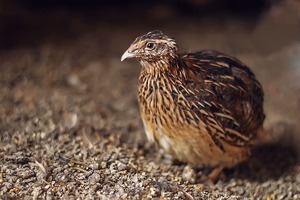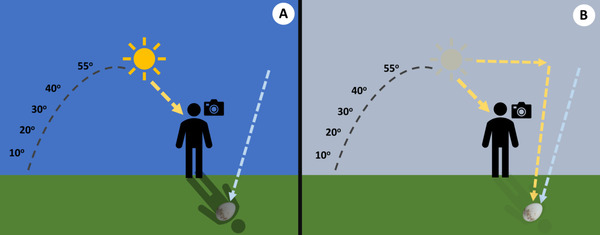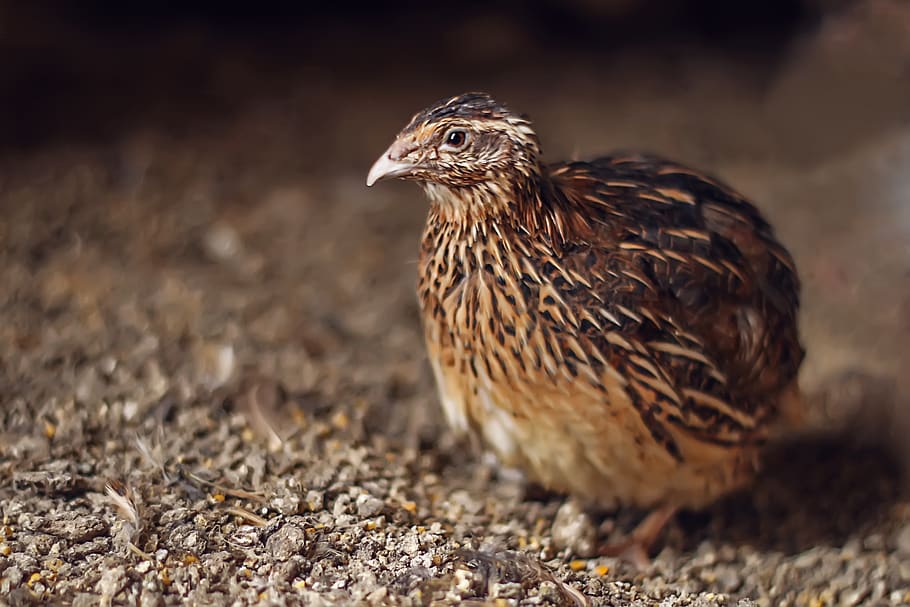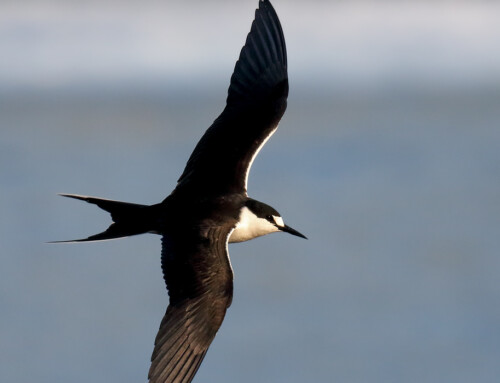 LINKED PAPER
LINKED PAPER
Presence of the cloud cover and elevation angle of the sun affect measurements of eggshell coloration and patterning obtained from calibrated digital images. Szala, K., Tobolka, M. & Surmacki A. 2023 Ecology and Evolution. doi: 10.1002/ece3.10170 VIEW
Calibrated digital photography is more and more often used in studies exploring colouration and patterning of animals. As taking a picture is relatively quick, does not require excessive equipment and allows measuring of both colour and pattern, this method has some advantages over spectrometry, especially in studies carried out in the field and when time matters (Stevens 2011). Similarly to spectrometry, to control for fluctuations of light conditions when taking photographs, grey standard(s) of known reflectance should be present within a frame of every image. This allows the expression of brightness of all pixels in the image with respect to the known reference, a process that is referred to as normalisation in the literature (Stevens et al. 2007; Troscianko and Stevens 2015).
There are some assumptions behind the normalisation of digital images. First is that grey standard(s) and measured object(s) are at the same distance relative to the light source. Second is that light reflects from both standard(s) and measured object(s) at the same angle (Troscianko and Stevens 2015; Johnsen 2016). While this is possible in the case of flat objects such as moth wings or avian feathers, these assumptions will never be met in the case of avian eggs, due to their shape and spatial nature. Indeed, eggs, especially the ones with complex patterns, are not straightforward to photograph. It is easy either to overexpose their bright background coloration or to underexpose their dark spots. Furthermore, because of the curvature, less light reflects from regions closer to a visible egg’s edge to reach a camera sensor, resulting in a shading of the edges (Gómez and Liñán-Cembrano 2017). Finally, photographing eggs in directional light can lead to glare (Troscianko and Stevens 2015).

Figure 1 An example of a picture of eggs used in the study. For normalisation, we used the brightest and the darkest grey standards in the colour checker on the right side (the brightest and the darkest squares). The eggs were always placed with the same side facing the camera.
How does violation of the assumptions of the normalisation process contribute to inconsistency of colour and pattern measurements of eggshells?
To explore this topic, we photographed the same set of 36 blown eggs of Japanese Quail (Coturnix japonica) (always the same side of every egg) alongside grey standards in a set of different natural light conditions – at five different heights of sun above horizon at both sunny and uniformly overcast days. Then, we normalised the images with respect to grey standards and calculated an array of colour and pattern descriptors such as brightness, contrast, redness, dominating spot size and pattern diversity in MICA Toolbox (Troscianko and Stevens 2015). Given that all assumptions of normalisation are met, different illuminations should not introduce any noise into measurements and every measuring session should yield the same results.

Figure 2 Depiction of the study. We photographed the same set of Japanese quail’s Coturnix japonica eggs in 10 different light conditions: at five heights of sun above horizon on sunny (A) and uniformly overcast (B) day. Grey dashed line represents the route of sun, yellow dashed arrow depicts sunlight and blue dashed arrow skylight. Following other studies, we photographed the eggs in our own shade.
However, we found that varied light introduced some noise into measurements of eggshells. The measurements were more repeatable in overcast than in sunny weather. This is because a cloud layer acts as a diffuser making the eggs more evenly illuminated with less pronounced shades close to edges. The traits that were highly affected by variable light were brightness and contrast, while redness and different aspects of patterning were more resistant to changes in illumination. Importantly, for redness the variability caused by the height of the sun above the horizon was higher than the variability caused by the presence or absence of clouds. This is worth noting, because, as our small literature review revealed, the height of the sun above the horizon is often overlooked in studies using calibrated digital photography to measure eggshell appearance.

Figure 3 Repeatability of measurements taken in different light conditions. Orange points show repeatability of measurements taken in sunny conditions, blue points in overcast conditions and green points are a combination of both categories (all measurements together). Additionally, we photographed a subset of 18 eggs twice in constant artificial light to check how much noise arises from other possible sources, such as selecting an egg outline to measure it in the software – represented by grey points.
Our results showed that normalisation is not able to fully control for changes in illumination when measuring eggs in natural lighting conditions. In our paper, we discussed this issue, presented possible solutions and provided some guidelines on how to minimise the measurement error. Doing so, we aim to help researchers who are just starting to use the great tool that calibrated digital photography is in their research on colouration and patterning of eggshells. Finally, we hope to contribute to the establishment of a common protocol that would make results of different studies more comparable.
References
Gómez, J. & Liñán-Cembrano, G. 2017. SpotEgg: an image-processing tool for automatised analysis of colouration and spottiness. Journal of Avian Biology 48:502-512. VIEW
Johnsen, S. 2016. How to measure color using spectrometers and calibrated photographs. Journal of Experimental Biology 219:772-778. VIEW
Stevens, M. 2011. Avian vision and egg colouration: Concepts and measurements. Avian Biology Research 4:168-184. VIEW
Stevens, M., Párraga, C.A., Cuthill, I.C., Partridge, J.C. & Troscianko, T.S. 2007. Using digital photography to study animal coloration. Biological Journal of the Linnean Society 90:211-237. VIEW
Troscianko, J. & Stevens, M. 2015. Image calibration and analysis toolbox – a free software suite for objectively measuring reflectance, colour and pattern. Methods in Ecology and Evolution 6:1320-1331. VIEW
Image credit
Top right: © CC0 Wallpaperflare.
If you want to write about your research in #theBOUblog, then please see here.




